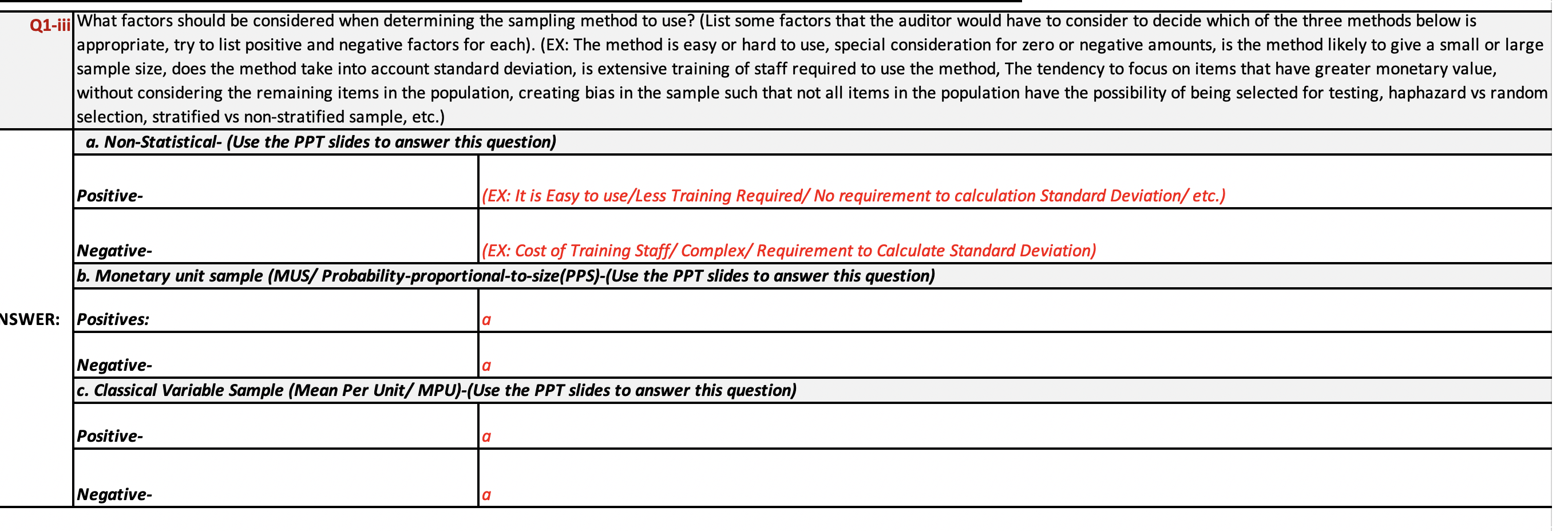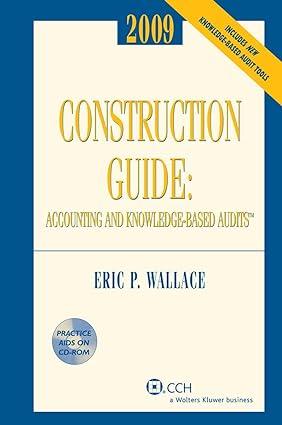

Audit Sampling Case Study- Air BNB Co. You are the experienced assistant auditor for Super Health Bike Co (the "Company"), whose audit is subject to the standards of the AICPA. The company develops, manufactures, and distributes fitness bikes similar to Peleton. Your engagement team has identified risks of material misstatement related to the existence, valuation and allocation, and rights and obligations assertions of accounts receivable, specifically the risks of material misstatement that the client has recorded in sales and accounts receivable for sales and shipments that are not valid or are recorded at the incorrect amount. The total balance of accounts receivables is $44 Million Dollars. Your field senior has assigned you to test the accounts receivable balance by sampling and confirming balances with individual customers, which is a common audit test to address these risks of material misstatement. As part of your risk assessment procedures, you obtained an understanding of the Company's accounting policy, processes, and controls regarding the accounts receivable balance by performing procedures (including inquiries of management and process owners) and walkthroughs of the processes related to accounts receivable. As a result of these procedures, you understand that the accounts receivables balance is relatively homogeneous and consists of a high volume of low-dollar value transactions. You decide to use data analytics to obtain fact-based evidence and to corroborate your understanding of the accounts receivables balance. On the basis of your analysis, you identified one statistical outlier of $4 million, while the remaining balance aggregated to $40 million, which is made up of approximately 4,000 homogeneous transactions. Upon further inquiries about the $4 million transaction above, you determined that it is a related-party transaction. On the basis of your analysis of the accounts receivable balance, you define the customer balance as the sampling unit. You determine that any balances greater than performance materiality should be selected for testing and therefore select the $4 million related-party transaction as a judgemental selection. You then determine that you would statistically sample the remaining population. The other relevant factors are as follows: Performance materiality (Tolerable Misstatement) is $1 million. Clearly trivial threshold (De Minimis Materiality) is $70,000. The population size, excluding the $4 million selected balance, is $40 million (no other items are above performance materiality). 1. The Inherent level of risk is determined to be Higher/High. You are relying on the operating effectiveness of internal controls and therefore Control Risk is determined to be Low. 1. Combined Risk of Inherent and Control Risk (AKA Risk of Material Misstatement RMM") is determined to be Moderate. The client provided the accounts receivable population to you in electronic format. 1. Through the use of data analytics, you noted that the population had similar, positive value characters. 01-iii What factors should be considered when determining the sampling method to use? (List some factors that the auditor would have to consider to decide which of the three methods below is appropriate, try to list positive and negative factors for each). (EX: The method is easy or hard to use, special consideration for zero or negative amounts, is the method likely to give a small or large sample size, does the method take into account standard deviation, is extensive training of staff required to use the method, The tendency to focus on items that have greater monetary value, without considering the remaining items in the population, creating bias in the sample such that not all items in the population have the possibility of being selected for testing, haphazard vs random selection, stratified vs non-stratified sample, etc.) a. Non-Statistical- (Use the PPT slides to answer this question) Positive- (EX: It is Easy to use/Less Training Required/ No requirement to calculation Standard Deviation/ etc.) Negative- (EX: Cost of Training Staff/ Complex/ Requirement to Calculate Standard Deviation) b. Monetary unit sample (MUS/ Probability-proportional-to-size(PPS)-(Use the PPT slides to answer this question) VSWER: Positives: Negative- c. Classical Variable so LIMIT Mean Per U NL/ the PPT slides to answer this g Positive- Negative








